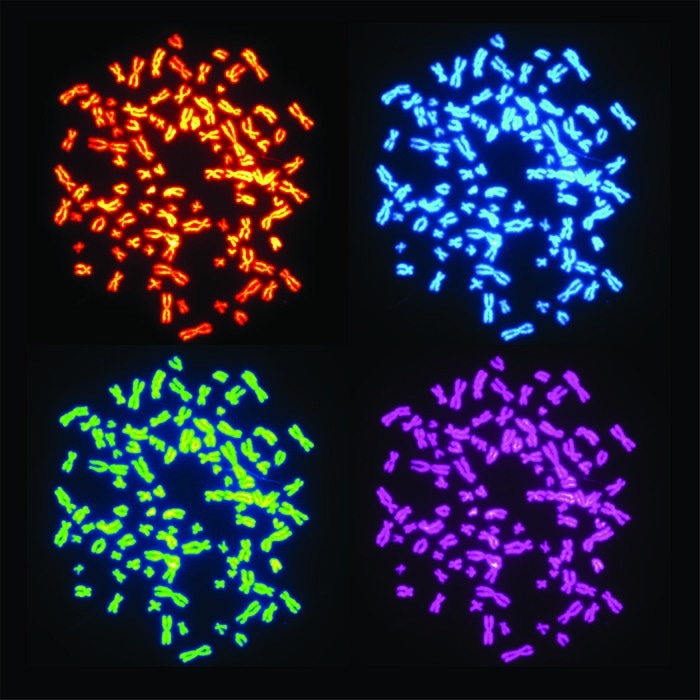Since a single cell has 2–3 m of DNA, the only method to store it is in tight coils. The answer is chromatin, a DNA-protein complex that is wrapped around histone proteins. This complex gradually folds into what are known as chromosomes in 3D space, a multi-layered organization made up of loops, domains, and compartments.
 Chromosomes in cells with whole genome doubling. Image Credit: Elisa Oricchio/Giovanni Ciriello (EPFL/UNIL)
Chromosomes in cells with whole genome doubling. Image Credit: Elisa Oricchio/Giovanni Ciriello (EPFL/UNIL)
Any issues with chromatin structure can have negative implications, including the development of cancer since the organization of chromatin is directly connected to gene expression and the proper functioning of the cell.
The phenomenon known as “whole genome doubling” (WGD), in which every chromosome in a cell gets duplicated, is a frequent occurrence in around 30% of all human cancers. WGD causes genomic instability inside the cell, which can result in chromosomal changes and further mutations that aid in the development of cancer.
A group of scientists led by Elisa Oricchio at EPFL and Giovanni Ciriello at UNIL has now discovered a new clue as to how WGD fuels cancer. In a study that was just published in Nature, the researchers demonstrate how a process known as “loss of chromatin segregation” can have an impact on the 3D arrangement of the chromatin within the cell.
The study focused on cells that are more vulnerable to WGD since they lack the tumor suppressor gene p53. They discovered that WGD disrupts the meticulous arrangement of chromatin in the cell by reducing the segregation of its structural components, such as loops, domains, and compartments.
As a result, the genetic material that is often kept separate gets mixed together, affecting the position of genomic regions in three-dimensional space, a process known as “sub-compartment repositioning.” This prepares the ground for the activation of oncogenes, which are genes responsible for the development of cancer.
Loss of chromatin segregation and chromosomal instability are complementary processes that act together to promote the development of cancer, the researchers discovered. They also discovered that the effects of WGD on chromatin structure are generally independent of chromosomal changes.
The research offers a fresh perspective on how chromatin structure and WGD interact to cause cancer. Future studies could assist in better understanding how the disorganization of the 3D structure of chromatin contributes to the transformation of a cell into a cancerous one.
This research could make use of highly multiplexed single-cell molecular profiles, barcoding technologies, and new computational approaches.
Source:
Journal reference:
Lambuta, R. A., et al. (2023). Whole-genome doubling drives oncogenic loss of chromatin segregation. Nature. doi.org/10.1038/s41586-023-05794-2